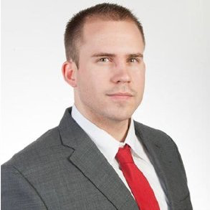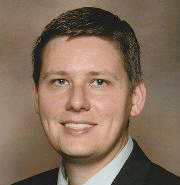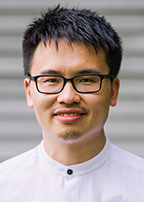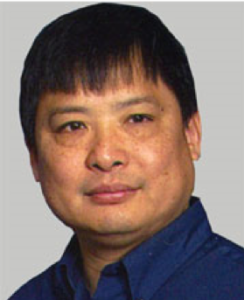
Speaker: Dr. Lu Lu – Yale University
Date: Sep 20, 2024; Time: 2:30 PM Location: PWEB 175
Abstract: As an emerging paradigm in scientific machine learning, deep neural operators pioneered by us can learn nonlinear operators of complex dynamic systems via neural networks. In this talk, I will present the deep operator network (DeepONet) to learn various operators that represent deterministic and stochastic differential equations. I will also present several extensions of DeepONet, such as DeepM&Mnet for multiphysics problems, DeepONet with proper orthogonal decomposition or Fourier decoder layers, MIONet for multiple-input operators, and multifidelity DeepONet. I will demonstrate the effectiveness of DeepONet and its extensions to diverse multiphysics and multiscale problems, such as bubble growth dynamics, high-speed boundary layers, electroconvection, hypersonics, geological carbon sequestration, full waveform inversion, and astrophysics. Deep learning models are usually limited to interpolation scenarios, and I will quantify the extrapolation complexity and develop a complete workflow to address the challenge of extrapolation for deep neural operators. Moreover, I will present the first operator learning method that only requires one PDE solution, i.e., one-shot learning, by introducing a new concept of local solution operator based on the principle of locality of PDEs.
Biographical Sketch: Dr. Lu Lu is an Assistant Professor in the Department of Statistics and Data Science at Yale University. Prior to joining Yale, he was an Assistant Professor in the Department of Chemical and Biomolecular Engineering at University of Pennsylvania from 2021 to 2023, and an Applied Mathematics Instructor in the Department of Mathematics at Massachusetts Institute of Technology from 2020 to 2021. He obtained his Ph.D. degree in Applied Mathematics at Brown University in 2020, master’s degrees in Engineering, Applied Mathematics, and Computer Science at Brown University, and bachelor’s degrees in Mechanical Engineering, Economics, and Computer Science at Tsinghua University in 2013. His current research interest lies in scientific machine learning, including theory, algorithms, software, and its applications to engineering, physical, and biological problems. His broad research interests focus on multiscale modeling and high performance computing for physical and biological systems. He has received the 2022 U.S. Department of Energy Early Career Award, and 2020 Joukowsky Family Foundation Outstanding Dissertation Award of Brown University. He is also an action editor of Journal of Machine Learning.





 The talk will focus on two themes. The first will be an overview of our current ARPA-E project to condense water from flue gas for dry-cooled power plants power plants. Water use by power plants is an increasing concern across the U.S., and is particularly problematic in arid regions, such as the southwest. In this project, an advanced two-phase thermosyphon concept is employed that removes several of the traditional limitations of conventional thermosyphons. The condensed water can be used to pre-cool the condenser air to reduce the effective ambient temperature, for turbine inlet air evaporative cooling, or for other uses in the plant, as needed. The second portion of the talk will provide a short overview of other energy-related research activities in the Mechanical Engineering department at Stony Brook University with the goal to explore future opportunities for collaboration and joint projects between both institutions.
The talk will focus on two themes. The first will be an overview of our current ARPA-E project to condense water from flue gas for dry-cooled power plants power plants. Water use by power plants is an increasing concern across the U.S., and is particularly problematic in arid regions, such as the southwest. In this project, an advanced two-phase thermosyphon concept is employed that removes several of the traditional limitations of conventional thermosyphons. The condensed water can be used to pre-cool the condenser air to reduce the effective ambient temperature, for turbine inlet air evaporative cooling, or for other uses in the plant, as needed. The second portion of the talk will provide a short overview of other energy-related research activities in the Mechanical Engineering department at Stony Brook University with the goal to explore future opportunities for collaboration and joint projects between both institutions. The U.S. Army Research Laboratory (ARL) was activated 25 years ago with a mission to discover, innovate and transition science and technology to ensure dominant strategic land power. One of key research strategies at ARL is a development of superior protection systems for individual warfigter and vehicles. The protective systems often use polymers due to their low weight, good strength and toughness which improves resistance to ballistic penetration.
The U.S. Army Research Laboratory (ARL) was activated 25 years ago with a mission to discover, innovate and transition science and technology to ensure dominant strategic land power. One of key research strategies at ARL is a development of superior protection systems for individual warfigter and vehicles. The protective systems often use polymers due to their low weight, good strength and toughness which improves resistance to ballistic penetration. Abstract: This presentation is focused on Isogeometric Analysis (IGA) with applications to solids and structures, starting with early developments and results, and transitioning to more recent work. Novel IGA-based thin-shell formulations are discussed, and applications to progressive damage modeling in composite laminates due to low-velocity impact and their residual-strength prediction are shown. Fluid–structure interaction (FSI) employing IGA is also discussed, and a novel framework for air-blast-structure interaction (ABSI) based on an immersed approach coupling IGA and RKPM-based Meshfree methods is presented and verified on a set of challenging examples. The presentation is infused with examples that highlight effective uses of IGA in advanced engineering applications.
Abstract: This presentation is focused on Isogeometric Analysis (IGA) with applications to solids and structures, starting with early developments and results, and transitioning to more recent work. Novel IGA-based thin-shell formulations are discussed, and applications to progressive damage modeling in composite laminates due to low-velocity impact and their residual-strength prediction are shown. Fluid–structure interaction (FSI) employing IGA is also discussed, and a novel framework for air-blast-structure interaction (ABSI) based on an immersed approach coupling IGA and RKPM-based Meshfree methods is presented and verified on a set of challenging examples. The presentation is infused with examples that highlight effective uses of IGA in advanced engineering applications.